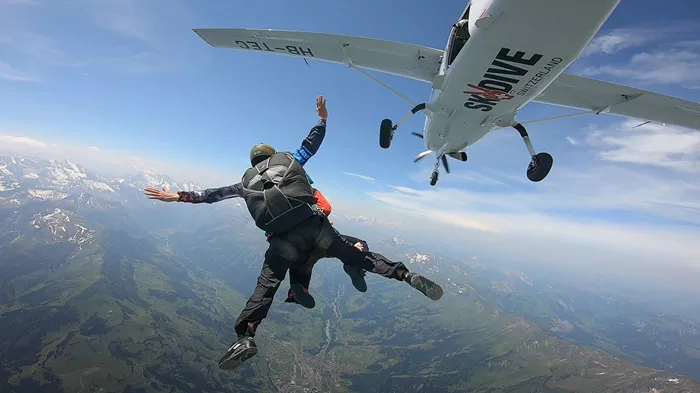Skydiving is a thrilling and adventurous sport that captivates thousands of enthusiasts worldwide. However, behind the adrenaline rush and breathtaking views lies a sobering reality: the risk of fatal accidents. Understanding the factors contributing to skydiving fatalities is crucial for improving safety standards and ensuring the longevity of this exhilarating activity.
Understanding Skydiving Fatalities
Skydiving fatalities, while statistically rare, occur under specific circumstances that warrant careful examination. Each incident provides valuable insights into the complex interplay of factors that can lead to tragedy in the skies. Analyzing these incidents helps in identifying patterns and developing targeted prevention strategies.
Human Error: A Primary Factor
Human Factors in Skydiving Accidents
Human error remains one of the leading causes of skydiving fatalities. This section explores the different types of human errors that can compromise safety, including:
Pilot Error: Errors in aircraft handling, navigation mistakes, and misjudgments during flight operations can lead to catastrophic outcomes.
Diver Error: Mistakes made by skydivers during the jump, such as improper body positioning, failure to deploy parachutes at the correct altitude, or inadequate response to emergency situations.
Understanding these human factors is essential for developing training programs that emphasize situational awareness, decision-making under stress, and effective communication between divers and ground crew.
see also: Mastering Mountain Biking: Overcoming Challenges For Beginners
Pilot Error and Parachute Malfunctions
Pilot error can occur due to factors such as fatigue, distraction, or lack of experience. Training programs for pilots should focus on precision flying techniques, emergency procedures, and the importance of pre-flight checks to minimize the risk of accidents.
Parachute malfunctions, although relatively rare, can be catastrophic if not addressed promptly. These may include:
Canopy Malfunctions: Issues with the main parachute deployment, such as line twists, partial deployments, or complete failure to open.
Reserve Parachute Failures: Failures in the reserve parachute system due to improper packing, aging equipment, or manufacturing defects.
Rigorous inspection, maintenance protocols, and regular equipment checks are critical to mitigating parachute-related accidents.
Environmental Conditions and Their Impact
Weather Conditions and Operational Safety: The influence of weather conditions on skydiving safety cannot be overstated. Adverse weather conditions, including high winds, thunderstorms, turbulence, and poor visibility, pose significant risks to skydivers and pilots alike. Operational guidelines should include strict criteria for weather limitations and real-time monitoring of weather patterns to ensure safe jumping conditions.
Impact of Altitude and Terrain: Altitude and terrain play crucial roles in skydiving safety. High-altitude jumps require precise planning and coordination to account for oxygen levels, temperature changes, and potential hazards during descent. Understanding the terrain around drop zones is essential for assessing landing areas and planning emergency procedures in case of off-target landings.
Equipment Reliability and Maintenance
Ensuring Equipment Safety: Reliable skydiving equipment is paramount to safety. Modern parachutes and harness systems undergo rigorous testing and certification processes to meet industry standards. Regular maintenance, including packing inspections, line checks, and canopy integrity assessments, ensures that equipment performs reliably during jumps.
Investigating Equipment Failures: In-depth analysis of equipment failures provides insights into potential design flaws, manufacturing defects, or user errors that may compromise safety. Case studies and incident reports contribute to ongoing improvements in equipment design, materials technology, and safety protocols within the skydiving industry.
Training and Skill Development
Role of Training Programs
Effective training programs are fundamental to reducing skydiving fatalities. Comprehensive training curricula should encompass:
Ground School: Theoretical knowledge of skydiving principles, equipment operation, emergency procedures, and safety protocols.
Practical Training: Hands-on experience in simulated scenarios, including mock exits, emergency drills, and controlled descents.
Continuing Education: Ongoing skills development, refresher courses, and proficiency testing to maintain high safety standards among licensed skydivers.
Skills Proficiency and Certification
The significance of skills proficiency and certification in skydiving cannot be overstated. Licensing requirements ensure that skydivers possess the necessary knowledge, skills, and experience to perform jumps safely. Regular renewal of licenses and adherence to continuing education requirements promote ongoing safety awareness and skill enhancement within the skydiving community.
Regulatory Oversight and Safety Measures
Regulatory Frameworks
Regulatory bodies play a crucial role in overseeing skydiving operations and enforcing safety standards. National aviation authorities establish regulations governing pilot licensing, aircraft maintenance, parachute equipment standards, and operational guidelines for skydiving centers. Compliance with regulatory requirements is essential for ensuring legal compliance and maintaining public confidence in skydiving safety.
Implementing Safety Protocols
Best practices for implementing safety protocols in skydiving centers include:
Pre-Flight Checks: Comprehensive inspections of aircraft, parachutes, and safety equipment before each jump.
Emergency Response Plans: Clear protocols for responding to in-flight emergencies, equipment malfunctions, and medical emergencies during skydiving operations.
Incident Debriefing: Post-incident analysis and debriefing sessions to identify root causes, lessons learned, and opportunities for improving safety procedures.
Case Studies and Lessons Learned
Learning from Past Incidents
Examining specific case studies of skydiving accidents provides valuable lessons for enhancing safety measures and risk management strategies within the sport. Case studies may highlight:
Contributing factors such as weather conditions, equipment failures, or human errors.
Recommendations for procedural improvements, equipment upgrades, or training enhancements based on incident findings.
Analyzing Trends and Patterns
Identifying recurring trends and patterns in skydiving fatalities offers insights into preventive actions and industry-wide improvements. Statistical analysis of accident data, demographic trends among accident victims, and geographical considerations inform targeted interventions to reduce the incidence of skydiving accidents.
Conclusion
Skydiving fatalities serve as a sobering reminder of the risks associated with this exhilarating sport. By addressing human factors, enhancing equipment reliability, improving training standards, and implementing robust regulatory oversight, the skydiving community can collectively strive towards reducing these incidents and ensuring safer skies for enthusiasts worldwide.
Related topics:
- Lauren Mukheibir’s Journey To The Paris Olympics: South Africa’s Rising Star In Sport Climbing
- Surfing’s First Billionaire Shaper: Who Will Take The Crown?
- Ed Davey Takes Electoral Leap With Bungee Jump In Eastbourne


